Introduction to SEO Blogging

So, you’ve got a blog, or you’re thinking of starting one, and you’ve heard that SEO is the magic sauce that brings in readers from Google. But here’s the thing: writing blog posts that rank isn’t just about stuffing in a few keywords and hoping for the best. It’s a mix of strategy, storytelling, and smart optimization.
In today’s digital world, SEO blogging is more than a buzzword. It’s a powerful tool that, when done right, can drive organic traffic to your site, build authority in your niche, and ultimately grow your brand or business. Whether you’re a seasoned writer or a newbie just stepping into the content game, understanding the principles of SEO blogging is a game-changer.
In this guide, we’ll break down what SEO blogging really means, how to craft posts that both search engines and humans love, and the key tactics that can take your blog from hidden gem to front-page superstar.
Let’s dive in.
Why SEO Blogging Matters for Your Website
Let’s get one thing straight: your website is only as powerful as the traffic it attracts. And guess what? SEO blogging is one of the most reliable, cost-effective ways to bring in that traffic without constantly paying for ads. Here’s a structured overview of its significance:
Enhanced Visibility: SEO blogging ensures your content is easily discoverable by search engines, increasing your chances of appearing at the top of search results. Strategic keyword usage allows search engines to recognize and rank your content effectively.
Attracting Targeted Traffic: High-ranking blogs tend to attract more visitors, particularly those actively seeking information related to your niche. This targeted traffic often leads to higher engagement and conversion rates, as users are more likely to trust and interact with authoritative content.
Improving User Experience: As search engines consider user experience metrics, SEO blogging contributes to better navigation and content structure. Clear headings, meta descriptions, and optimized content enhance both user experience and search engine rankings.
Establishing Authority: Consistently publishing valuable, well-researched content positions you as a thought leader in your field. This fosters trust among readers, encouraging them to engage more deeply with your brand and consider your offerings.
Driving Conversions: The targeted nature of SEO-Driven traffic increases the likelihood of conversions, whether through sales, sign-ups, or inquiries. Users who find your content via search are typically more aligned with your products or services.
Content Marketing Strategy: SEO blogging serves as a cornerstone for content marketing efforts, providing a steady stream of fresh, relevant content that educates and engages your audience while promoting your brand.
Competitive Edge: In a competitive digital landscape, staying ahead requires keeping pace with SEO trends. SEO blogging not only helps you compete but also enables you to surpass competitors by offering unique, valuable content.
Analytics Insights: Tools like Google Analytics offer insights into content performance, helping refine strategies. This data informs adjustments to keywords, content focus, and user engagement tactics.
In summary, SEO blogging is a multifaceted approach that boosts visibility, attracts traffic, enhances user experience, establishes authority, drives conversions, supports content marketing, provides a competitive edge, and offers actionable analytics. Embracing SEO blogging is essential for maximizing your website’s potential and achieving long-term success.
How to Choose the Right Keywords for Your Niche

Not all keywords are created equal, and targeting the wrong ones can leave your blog buried deep in the search results, no matter how good your content is. That’s why choosing the right keywords for your niche is a crucial first step in any SEO strategy.
It’s not just about picking popular search terms; it’s about finding keywords that align with your audience’s needs, match your content goals, and give you a realistic chance to rank. Whether you’re in fitness, finance, fashion, or tech, the process is the same: research, relevance, and intent.
Here’s how to identify keywords that actually move the needle for your blog and your business.
Understanding Your Audience
Identify Your Niche: Clearly define the topic of your blog, such as eco-friendly living, to tailor your keyword selection.
Determine Target Audience: Consider the demographics, interests, and pain points of your ideal readers. For instance, eco-conscious individuals may seek sustainable solutions.
Keyword Research Tools
Utilize Effective Tools: Use tools like Google Keyword Planner, SEMrush, or Ahrefs to identify relevant keywords. These tools provide insights into search volume and competition.
Brainstorm Topics: Generate a list of potential topics your blog could cover, such as “best eco-friendly appliances.”
Explore Long-Tail Keywords: Focus on specific, detailed phrases like “best eco-friendly appliances” to target less competitive yet relevant searches.
Evaluating Keywords
Assess Search Volume and Competition: Ensure keywords have sufficient search volume to attract traffic without excessive competition.
Consider Buyer Intent: Identify if keywords indicate a readiness to purchase, such as “buy sustainable furniture,” which is high intent.
Aligning with Blog Purpose: Tailor keywords to match your blog’s goals. For sales, include terms like “shop”; for advice, use terms like “how to reduce waste.”
Balancing Keyword Types: Use a combination to capture a wide audience while addressing specific needs. Ensure each post is optimized for at least one primary keyword without overstuffing.
Voice and Tone Consideration: Align keywords with your blog’s tone, whether casual or formal, to resonate with your audience.
Competitor Analysis: Examine the keywords used by successful blogs in your niche to identify gaps you can fill.
Continuous Optimization: Regularly review analytics to adjust keywords based on what works. Conduct A/B tests to refine headlines and content.
Choosing the right keywords isn’t a guessing game, it’s a strategic decision that shapes every piece of content you create. When you focus on keywords that are relevant, attainable, and aligned with your niche, you’re setting your blog up for long-term SEO success.
So take the time to research, validate, and prioritize your keywords. It’s the foundation of smart blogging; and the key to getting found online
Crafting a Content Strategy That Drives Traffic
Great blog posts don’t happen by accident, and traffic doesn’t show up just because you hit “publish.” If you want consistent results, you need a content strategy that’s built on purpose, not guesswork.

A solid SEO content strategy is your roadmap. It helps you decide what to write, when to publish, and why each piece matters to your audience and your goals. It takes the chaos out of content creation and replaces it with clarity, consistency, and results.
Let’s walk through how to build a strategy that not only gets you traffic—but gets you the right traffic
Develop a Content Calendar
Start by creating a content calendar to maintain consistency. Plan out topics ahead of time, assigning specific dates to publish each piece. This helps in maintaining a regular flow of content and keeps your audience informed about new posts. Use tools like Google Calendar or Trello to organize your schedule.
Leverage Evergreen Content
Evergreen content is timeless and continues to attract readers long after publication. Focus on topics that remain relevant, such as “Top 10 Eco-Friendly Products” or “How to Reduce Waste.” These posts can be updated periodically to keep them fresh and engaging.
Incorporate Seasonal and Trend-Based Content
Align your content with seasonal events or trending topics. For example, publish holiday-specific guides during Christmas or share summer DIY projects when the weather warms up. This ensures your content resonates with your audience during peak times.
Use Visuals to Enhance Engagement
Visuals, such as images, infographics, charts, and videos, make content more appealing and easier to consume. People are more likely to spend time on posts with rich media, which can also improve your site’s dwell time—a critical factor for SEO.
Optimize Internal Linking
Internal linking helps users explore more of your site and keeps them engaged. Link to related posts within your content, such as “If You Liked X Post, You’ll Love…” or suggest follow-up actions like “Check out our top 5 eco-friendly products.”
Repurpose Content for Maximum Reach
Turn your blog posts into other formats like podcasts, YouTube videos, or SlideShares. This expands your content’s reach beyond your blog and can attract a whole new audience.
Focus on Your Audience’s Needs
Create content that addresses your audience’s pain points and answers their questions. Whether it’s a detailed buyer’s guide, a step-by-step tutorial, or a case study, ensure your posts provide real value.
Leverage Guest Posting Opportunities
Guest posting allows you to publish content on external websites, which can drive traffic to your blog. It also builds credibility and exposes your brand to a wider audience.
Promote Content Across Channels
Share your blog posts on social media platforms, forums, and relevant communities. Engage with your audience by responding to comments and joining discussions to foster a sense of community.
Track and Analyze Performance
Use analytics tools like Google Analytics or SEMrush to monitor your content’s performance. Identify popular posts, track bounce rates, and adjust your strategy based on what works best. A/B test different headlines or formats to further optimize engagement.
A well-crafted content strategy turns random blog posts into a powerful traffic engine. When you plan with intent, target the right keywords, and stay consistent with your publishing, you’re not just creating content—you’re building momentum.
Remember, SEO blogging is a marathon, not a sprint. Stick to your strategy, keep refining it as you learn, and over time, you’ll see your traffic and your authority grow.
Optimizing On-Page SEO Elements for Better Rankings
You’ve written a great blog post, now it’s time to make sure Google notices it. That’s where on-page SEO comes in.
On-page SEO is all about optimizing the elements within your blog post so that search engines can understand, index, and rank it effectively. Think of it as giving Google a roadmap to your content and making that roadmap as clear and helpful as possible.
From headlines to internal links, small tweaks can make a big difference in how your blog performs in search. Let’s break down the key on-page elements you need to focus on to boost visibility and climb the ranking.
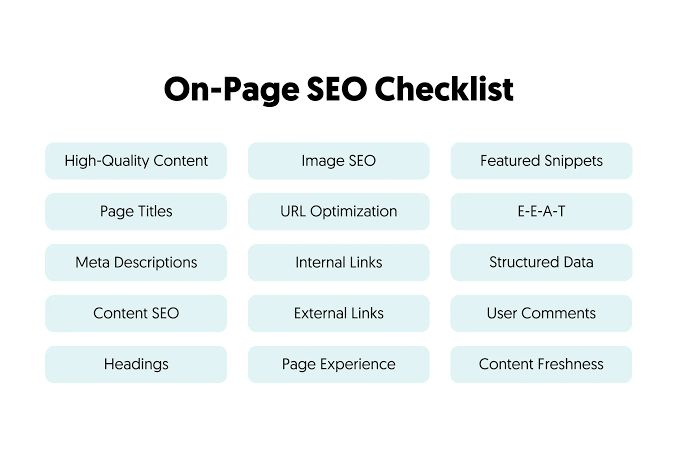
Craft Compelling Title Tags
The title tag is one of the most important elements for on-page SEO. It appears in the SERP as the clickable headline for your page. Ensure each title tag is unique, incorporates your primary keyword, and is compelling enough to entice users to click through. Follow these guidelines:
– Keep it under 60 characters.
– Include the main keyword early in the title.
– Use a natural tone that reflects the content of your blog post.
Example: “How to Master Social Media Marketing: A Step-by-Step Guide”
Write Effective Meta Descriptions
Meta descriptions serve as a brief preview of your content. They should be concise, include a call-to-action, and incorporate your target keywords. Aim for descriptions that are:
– Under 160 characters.
– Action-oriented.
– Complementary to the title tag.
Example: “Discover proven strategies to dominate social media marketing. Learn expert tips and techniques to grow your online presence today!”
Utilize Header Tags Strategically
Header tags (H1, H2, H3, etc.) help structure your content and improve readability. Use H1 for the main title of your page, and H2 or H3 for subheadings that break down your content. Incorporate relevant keywords naturally within these headers without overstuffing.
Example:
– H1: “The Ultimate Guide to SEO Blogging”
– H2: “How to Choose the Right Keywords for Your Niche”
– H3: “Top Tools for Keyword Research in 2025”
Create High-Quality, Keyword-Relevant Content
Search engines prioritize content that provides value to users. Write detailed, informative, and engaging content that addresses your audience’s pain points and answers their questions. Ensure your content is original, well-researched, and free of errors.
– Focus on evergreen topics that remain relevant over time.
– Use your target keywords naturally within the content.
– Keep paragraphs short and scannable.
Optimize Images with Alt Text
Images can improve user engagement and enhance your blog’s visual appeal. Properly optimize images by:
– Adding descriptive alt text with relevant keywords.
– Using file names that include keywords.
– Compressing images to reduce loading time.
Example:
– File name: “eco-friendly-products-101.jpg”
– Alt text: “Explore our selection of eco-friendly products designed to simplify your sustainable lifestyle.”
Clean Up and Optimize URLs
A clean URL structure improves both user experience and search engine crawling. Use hyphens to separate words and incorporate primary keywords naturally.
Example:
– Bad URL: “/unleash-your-websites-full-potential-seo-blogging-guide”
– Good URL: “/step-by-step-guide-to-seo-blogging”
Implement Internal Linking
Internal linking helps distribute link equity across your website and keeps users engaged. Link to related posts, guides, or resources within your content. Use anchor text that includes your target keywords naturally.
Example:
– “For more insights into choosing the right keywords, check out our guide on keyword research.”
Ensure a Mobile-Friendly Design
With mobile users dominating search engine traffic, ensure your blog is mobile-friendly. Use responsive design practices, mobile-first indexing, and fast-loading pages to improve your rankings.
Use Structured Data and Schema Markup
Structured data helps search engines understand your content better. Implement schema markup to highlight key information like article titles, authors, and publication dates.
Monitor and Update
Regularly audit your on-page SEO elements and update them as needed. Track changes in rankings and user behavior to identify areas for improvement.
On-page SEO isn’t about gaming the system, it’s about making your content more accessible, understandable, and useful for both search engines and real people.
When you consistently optimize elements like your titles, headers, images, and internal links, you’re giving your blog the best shot at ranking well—and staying there. Combine that with valuable content, and you’ve got a recipe for steady, organic growth
Technical SEO Tips for Maximizing Blog Performance
Great content and smart on-page SEO will take you far. but if your site is slow, broken, or hard to crawl, Google won’t give it the spotlight it deserves. That’s where technical SEO comes in.
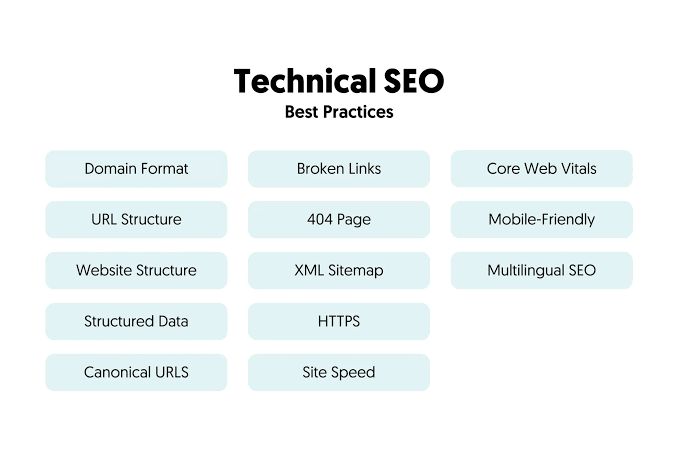
Technical SEO is all about optimizing the behind-the-scenes foundation of your blog to ensure it’s fast, secure, and easy for search engines to navigate. You don’t need to be a developer to get the basics right, you just need to know what to look for.
In this section, we’ll cover simple but powerful technical SEO tips that help your blog perform better in search and provide a smoother experience for your readers.
Optimize Site Speed:
– Image Optimization: Compress images to reduce loading times and add descriptive alt text with relevant keywords.
– Browser Caching: Utilize tools like Redis or Varnish to cache frequently accessed pages, improving load speeds for returning visitors.
Mobile Optimization:
– Responsive Design: Ensure your site is mobile-friendly using frameworks like Bootstrap or media queries.
– Mobile-First Indexing: Optimize your content specifically for mobile devices, as Google prioritizes mobile-first indexing.
Crawlability:
– Robots.txt File: Provide clear instructions for search engines on which pages to crawl.
– Sitemap.xml: Submit your site map to Google Search Console for efficient crawling.
– Fix Broken Links: Regularly audit your site to repair broken links, ensuring smooth navigation and proper indexing.
Canonicalization:
– Use canonical URLs to indicate preferred versions of your content, preventing duplicate content issues and ensuring search engines recognize the original source.
Security Measures:
– Implement HTTPS to establish trust and security, especially for sensitive information.
– Conduct regular security audits to identify and resolve vulnerabilities promptly.
Structured Data:
– Apply schema markup to highlight content attributes, aiding search engines in understanding your content better. For instance, denote authorship or publication details to enhance search snippets.
Breadcrumbs:
– Add breadcrumb navigation to aid users in understanding the site structure and improving SEO by showing the path to the current page.
Internal Linking:
– Link to relevant internal content to enhance user engagement and distribute link equity naturally, avoiding spammy practices.
Site Audits:
– Periodically conduct audits using tools like Screaming Frog or SEMrush to identify and rectify technical issues impacting SEO and user experience.
Stay Informed:
– Monitor Google’s Algorithm Updates through their official blog and adjust your strategy accordingly to maintain optimal performance.
You don’t have to get overly technical to make a big impact. By tightening up the back end of your blog, like improving speed, fixing broken links, and using secure, mobile-friendly design, you’re laying the groundwork for long-term SEO success.
Remember: content gets you noticed, but technical SEO helps you stay competitive. Keep your blog running smoothly, and both Google and your readers will thank you
Building Backlinks to Boost Your Blog’s Authority

If content is king, backlinks are the kingdom’s seal of approval. In the eyes of search engines, a backlink is like a vote of confidence. it tells Google that your content is trustworthy, valuable, and worth ranking.
But not all backlinks are created equal. It’s not about quantity; it’s about quality. A few links from reputable, relevant sites can do far more for your blog’s authority than dozens from spammy or unrelated sources.
In this section, we’ll explore practical, proven strategies to earn high-quality backlinks that boost your blog’s credibility and help you climb the search rankings
Content Creation: Focus on producing high-quality, informative, and engaging content that resonates with your target audience. This encourages natural backlinking as satisfied readers are more likely to share or link to your content.
Promotion Channels: Utilize social media platforms to share your content, increasing visibility and potential backlinks. Engage in guest blogging by writing for other niche-related sites, ensuring your content includes a link back to your site.
Outreach Strategy: Proactively reach out to bloggers and influencers in your niche. Start by commenting on their blogs to build rapport before suggesting collaborations or guest posting opportunities.
Tools and Resources: Employ tools like Ahrefs or BuzzStream to identify backlink opportunities. These tools can help you find existing backlinks to competitors and facilitate outreach efforts.
Link Building Tactics:
– Skyscraper Technique: Target competitors’ backlink sources and pitch guest posts or collaborations.
– Pillar Content: Develop comprehensive guides that serve as resources, encouraging other sites to link to your content.
– Shareable Formats: Create infographics, videos, or interactive content that naturally attracts backlinks.
Internal Linking: Strategically link your own content to ensure link equity is distributed and reader engagement is maintained, avoiding over-linking to prevent penalties.
Community Engagement: Participate in online forums and groups to build relationships. Contribute valuable insights, fostering potential backlinks from engaged communities.
Ethical Considerations: Avoid paid links to adhere to SEO ethics and prevent penalties. Focus on organic, relationship-based methods.
Backlinks are one of the most powerful signals in SEO, but they don’t just happen by chance. You earn them by creating valuable content, building relationships, and consistently showing up where your audience (and other site owners) are paying attention.
Focus on quality, stay consistent, and over time, your blog’s authority—and rankings—will grow right alongside your backlink profile
Analyzing Your Blog’s Performance with Analytics
Creating and optimizing blog content is only half the job. measuring its performance is what closes the loop. Without analytics, you’re essentially blogging in the dark, with no clear idea of what’s working and what’s not.
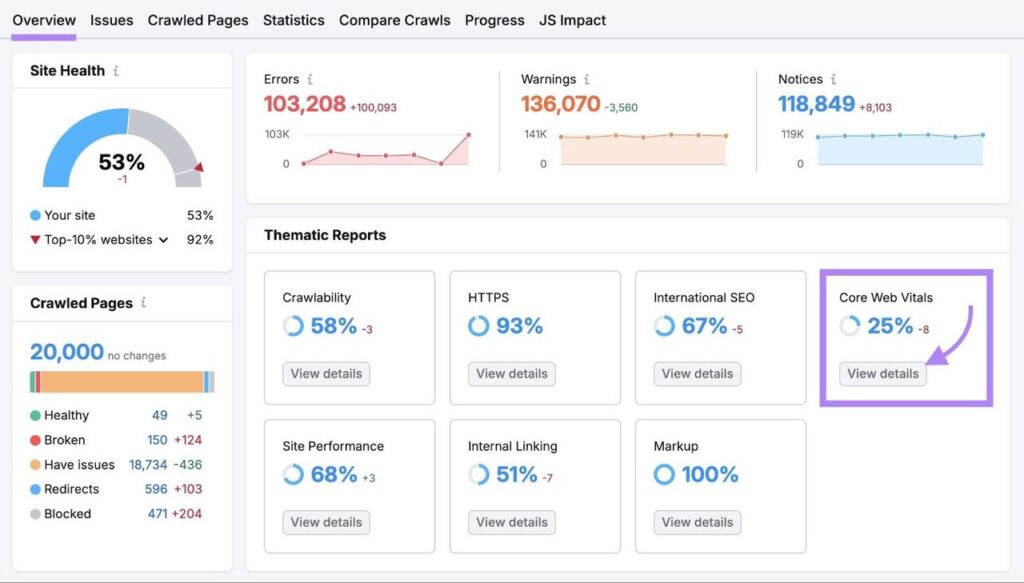
By tracking the right metrics, you gain valuable insights into how your audience engages with your content, where your traffic is coming from, and which posts are truly moving the needle. These insights help you double down on what’s effective and pivot away from what’s not.
In this section, we’ll show you how to use tools like Google Analytics and Google Search Console to monitor your blog’s performance and make data-driven decisions that fuel long-term SEO growth.
Key Metrics to Monitor:
Traffic Sources:
– Total Traffic: Measure monthly visitors to gauge overall engagement.
– Organic vs. Referral Traffic: Assess where your audience is coming from, focusing on organic searches for SEO effectiveness and referral sources like social media or other websites.
Bounce Rate:
– Track how quickly visitors leave your site. High bounce rates may indicate content that doesn’t meet user needs or a poor user experience.
Time on Page:
– Longer times indicate engaging content, while shorter durations suggest either uninteresting material or navigational issues.
Conversion Rate:
– Measure actions like sign-ups, downloads, or purchases. Analyze top-performing posts to replicate successful strategies.
Referral Traffic:
– Determine how much of your traffic is driven by external sources, indicating content worth sharing.
Keyword Rankings:
– Use tools like Google Search Console to identify high-ranking keywords and assess their contribution to traffic.
Engagement Metrics:
– Monitor social shares and comments to gauge content resonance and audience interaction.
Content Frequency:
– Evaluate how consistent updates impact traffic and engagement, adjusting frequency based on performance.
Mobile Responsiveness:
– Ensure your site is optimized for mobile devices, as a significant portion of traffic may originate from mobile users.
Tools and Techniques:
– Utilize Google Analytics for detailed traffic analysis and SEMrush for competitive keyword research.
– Set clear goals in Google Analytics aligned with business objectives to measure success.
Strategic Insights:
– Content Quality: Use high-performing posts as models for future content.
– User Experience: Address issues causing high bounce rates or low time-on-page metrics.
– SEO Optimization: Refocus on underperforming keywords and improve content accordingly.
Continuous Improvement:
– Regularly review analytics reports to adjust strategies, ensuring continuous growth and alignment with business goals.
Analytics isn’t just about numbers, it’s about clarity. The more you understand your blog’s performance, the better you can refine your strategy, serve your audience, and grow your organic traffic.
Check in regularly, follow the trends, and let the data guide your next move. Because when it comes to SEO blogging, what gets measured truly gets improved
Monetization Strategies for Your SEO-Built Blog

You’ve put in the work; optimized your content, built backlinks, and grown steady traffic through smart SEO. Now it’s time to turn that traffic into income.
Monetizing your blog isn’t just about slapping ads on your pages. It’s about choosing strategies that align with your niche, serve your audience, and scale with your growth. Whether you’re looking for passive income or building a full-time business, your SEO-powered blog can be a serious revenue engine.
In this section, we’ll explore effective monetization strategies—from affiliate marketing and digital products to sponsored posts and beyond—so you can start earning from the value you’ve created
Display Advertising (Google AdSense):
– Implement Google AdSense to place automated text ads on your site. Earnings depend on traffic volume and ad placement, making it a reliable choice for consistent income.
Affiliate Marketing:

– Partner with affiliate programs relevant to your niche. Promote products through carefully placed links, ensuring content remains informative and unbiased. Start by applying to programs like Amazon Associates or ShareASale and integrate affiliate links naturally into product reviews and recommendations.
Sponsored Content:
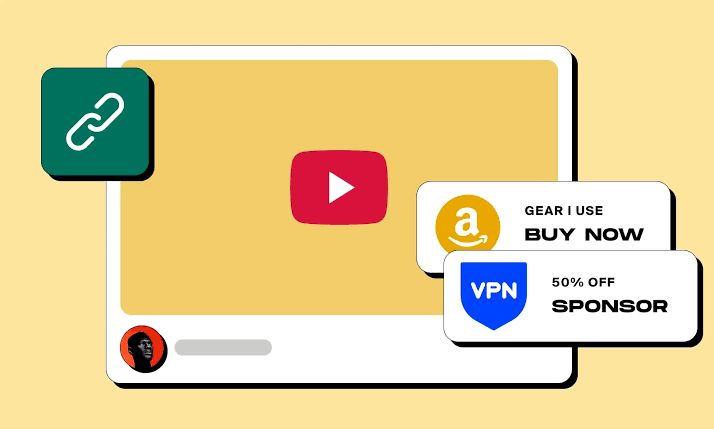
– As your blog gains traction, brands may seek collaborations. Accept sponsored posts or guest blogging opportunities, ensuring content stays truthful and valuable to maintain reader trust. Negotiate higher rates as your influence grows.
Subscription Models:
– Offer premium content through newsletters or memberships. Provide exclusive insights or early access to information in exchange for fees. Use email marketing tools or plugins to manage subscriptions effectively.
Ebooks and Online Courses:
– Compile popular blog posts into an ebook or develop an online course. Platforms like Udemy or Teachable facilitate course creation and hosting, allowing you to charge for in-depth knowledge transfer.
Consulting and Coaching:
– Position yourself as an expert by offering paid consulting or coaching sessions. Build trust with your audience to justify the fee, providing personalized advice based on your blog’s expertise.
Direct Digital Product Sales:
– Sell digital products like printables, templates, or guides directly from your blog. Platforms such as Gumroad or Etsy can host these sales, catering to specific niche demands.
Choosing the Right Strategy:
– Consider factors like audience size, content depth, and platform preferences. Each strategy has unique implementation requirements and audience appeal, so evaluate your blog’s strengths and audience needs to select the best fit.
By thoughtfully integrating these strategies, you can transform your SEO-driven blog into a profitable venture, enhancing both revenue and brand authority.
Staying Updated with SEO Trends to Stay Ahead of Competitors
SEO isn’t a “set it and forget it” game. What worked last year or even last month might not cut it today. Algorithms evolve, user behavior shifts, and new competitors pop up all the time. If you want to maintain your rankings (and edge out the competition), staying on top of SEO trends is non-negotiable.
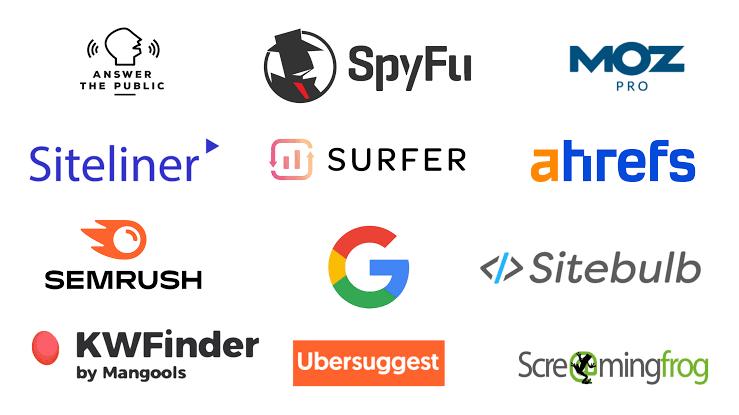
Keeping up with the latest changes helps you adapt early, avoid penalties, and seize new opportunities before everyone else. Whether it’s Google’s next big update, changes in AI-driven search, or emerging content formats, staying informed keeps you ahead of the curve.
In this section, we’ll look at how to stay current with SEO best practices and why that gives you a long-term advantage in the digital space
Keyword Research Tools
– Google Keyword Planner: A free tool by Google that helps identify keywords for your blog, offering insights into search volume and competition.
– SEMrush: A powerful paid tool for extensive keyword research, competitor analysis, and tracking ranking performance.
– Ahrefs: Known for its advanced backlink analysis and keyword research capabilities, Ahrefs aids in identifying high-value backlink opportunities.
Backlink Tools
– Google Search Console: Offers insights into backlink profiles and helps disavow harmful links.
– Moz Link Explorer: Provides detailed backlink data and analyzes the quality and distribution of your backlinks.
Analytics Tools
– Google Analytics: Tracks website traffic, user behavior, and conversions, essential for understanding blog performance.
– SEMrush Analytics: Offers a comprehensive view of your site’s performance, including traffic sources and keyword rankings.
Technical SEO Tools
– Yoast SEO Plugin: Integrates with WordPress to analyze on-page SEO, providing insights and suggestions for improvement.
– Screaming Frog SEO Spider: A crawler tool that identifies technical issues and maps out site structure.
Content Creation and Publishing Tools
– Grammarly: Assists in writing clear and engaging content, reducing grammatical errors.
– Canva: Provides templates for creating visually appealing images and graphics to enhance blog posts.
Social Media Integration Tools
– Buffer: Manages social media scheduling, helping to promote blog content effectively.
– Hootsuite: Allows monitoring of brand mentions and engagement across multiple platforms.
Benefits of Utilizing These Tools
These tools collectively enhance your ability to:
– Monitor Performance: Track metrics like traffic, rankings, and user behavior.
– Identify Gaps: Discover areas needing improvement through detailed analytics.
– Stay Ahead: Keep abreast of SEO trends and competitor strategies.
By integrating these tools into your SEO strategy, you can streamline processes, gain deeper insights, and make data-driven decisions to optimize your blog’s performance.
CONCLUSION
SEO blogging isn’t just about writing; it’s about writing with purpose. From choosing the right keywords to crafting a content strategy, optimizing on-page elements, building backlinks, and analyzing performance, every piece of the puzzle plays a role in helping your blog rise through the ranks.
It’s not a quick fix or an overnight success formula. But with consistency, strategy, and a willingness to learn and adapt, your blog can become a powerful tool not just for visibility, but for authority, impact, and income.
Whether you’re just starting out or looking to level up, the key is simple: focus on value, stay SEO-savvy, and never stop optimizing. The traffic, growth, and results will follow.